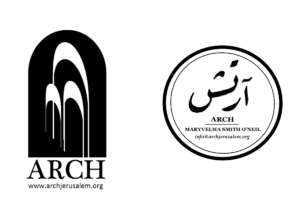Virtual Illés Relief
Our conception of day-to-day life in late Ottoman Jerusalem remains somewhat incomplete. It is thanks to the records of three documentarians—Hungarian bookbinder, Stephan Illés; British engineer, Charles Wilson; and German missionary, Carl Sandreczki—that we have access to critical data about the multifaceted city during the late 19th century — data that has, yet, been unexplored.
The Virtual Illés Initiative is a pioneering, transdisciplinary digital humanities project that aims to compile these fascinating records and facilitate universal access to these uncovered facets of the city. Extensive research will be conducted to extract information from three crucial primary sources: The Illés Relief (1873), a remarkable miniature model that depicts the Old City and the developing New City at the time of its fabrication, the Wilson Ordnance Survey (1865) and its network of 65 benchmarks located around Jerusalem, and Dr. Carl Sandreczki’s Index to the Orthography of Jerusalem (1865), which offers an exceedingly rare picture of the urban geography as understood by the majority population of Jerusalemites. The Initiative will digitally map this invaluable data to produce an information-dense and highly interactive resource accessible to international scholars and the global public alike.
ARCH Jerusalem commissioned a thorough digitization of the Illés Relief in 2019; this digitized replica will serve as a virtual, 3D representation of the city upon which all relevant data and multimedia will be embedded. Following a process of careful geotagging and curated annotation, a dynamic, spatiotemporal model of late Ottoman Jerusalem will be produced. This model, to be housed online, will allow visitors around the world to discover previously unexplored dimensions of Ottoman Jerusalem and to examine it in its broader geopolitical, social, and cultural contexts: international city, city of world religions, imperial city, and city of Jerusalemites
The Mughrabi Quarter Virtual Archive website offers a navigable 3D model of the Quarter as it stood in 1873, an orthographic map, as well as a media-rich archive. It also includes a series of video diaries from witnesses and survivors of the 1967 destruction.
Following this first phase, a global research campaign will initially focus on the histories of Jerusalem during the Ottoman era (1517-1917) by gathering, then analyzing, data to digitally map the entire virtual Illés Relief. Users will be able to navigate the Old City according to both place and time, excavating layers of geo-referenced data in the city’s-built topography and exploring its transformation over four centuries. This interactive web platform will incorporate data that showcases the living city, inhabited by Jerusalemites who shared a communitarian ethos and multiple identities.
After the completion of the initial phase, the virtual Illés Relief will be transformed into an experiential, spatial immersion installation, allowing viewers to experience the intricate, interwoven histories of Jerusalem thanks to a range of virtual and visualization technologies. Debuting in Switzerland, the interactive installation will be designed for portability in order to travel around the world to audiences far and wide. In conjunction with the digital museology exhibition, a unique VR film will transport viewers on a narrated time-travel tour of the Old City.
As a legacy project, The Virtual Illés Relief Initiative will be developed in various chronological phases over the course of a prospective ten-year period. The interactive platform will be regularly updated to reflect and incorporate ongoing contributions from scholars spanning myriad academic disciplines.
It is hoped that The Mughrabi Quarter Digital Archive and The Virtual Illés Relief Initiative will catalyze vital new discourses, especially vis-à-vis contested sites in Jerusalem, reinvigorating a commitment by the international community to uphold its legally designated status as “corpus separatum.” By making cultural heritage of outstanding universal value accessible to a global audience, especially when this heritage is increasingly under threat, it is also hoped that this Initiative will actively engage the global community in crucial debates about the very urgent role heritage plays in shaping the precarious future of Jerusalem.
© ARCH Jerusalem 2020
